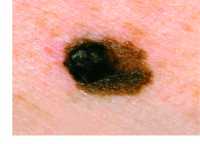Breast Cancer Survivors More Likely To Develop Subsequent Blood Cancers
 Dr. Marie Joelle Jabagi, PharmD, MPH
University of Paris Sud, Paris-Saclay University, Paris
Health Product Epidemiology Department
French National Agency for Medicines and Health Products Safety
Saint-Denis, France
MedicalResearch.com: What is the background for this study?
Response: Secondary hematologic malignant neoplasms that develop months or years after the diagnosis of breast cancer may be a consequence of genetic predisposition, environmental factors, previous cancer treatments or a combination of all those factors. These secondary malignant neoplasms are increasingly becoming a concern given that the population of breast cancer survivors is growing substantially. However, their frequency in real life has been poorly investigated to date.
The aims of our research were to estimate the frequency of various types of hematologic malignant neoplasm following a diagnosis of primary breast cancer among women aged 20 to 85 years in France during the past decade, and to compare it to the corresponding frequency in women of the French general population.
(more…)
Dr. Marie Joelle Jabagi, PharmD, MPH
University of Paris Sud, Paris-Saclay University, Paris
Health Product Epidemiology Department
French National Agency for Medicines and Health Products Safety
Saint-Denis, France
MedicalResearch.com: What is the background for this study?
Response: Secondary hematologic malignant neoplasms that develop months or years after the diagnosis of breast cancer may be a consequence of genetic predisposition, environmental factors, previous cancer treatments or a combination of all those factors. These secondary malignant neoplasms are increasingly becoming a concern given that the population of breast cancer survivors is growing substantially. However, their frequency in real life has been poorly investigated to date.
The aims of our research were to estimate the frequency of various types of hematologic malignant neoplasm following a diagnosis of primary breast cancer among women aged 20 to 85 years in France during the past decade, and to compare it to the corresponding frequency in women of the French general population.
(more…)Younger Cancer Survivors Face Greater Financial Burdens
First Patient Dosed in Phase 3 AGENT Study for Metastatic Colorectal Cancer
Esophageal Cancer: HMIE Procedure Reduces Morbidity Without Sacrificing Efficacy
WHO: Profits Outweigh R&D Costs of New Cancer Drugs
What Causes ‘Chemo Brain’ in Women?
Cancers Attributable to Obesity Vary by State
Breast Cancer Risk Remains Elevated 20-30 years After Childbirth
Pancreatic Cancer: mFOLFIRINOX After Surgery Improves Survival
Chemo and Some Cancers Raise Risk of Shingles
Dermatologist Discusses Personalized Approach to Skin Cancer Treatment
Some Anti-Tumor Drugs May Promote Delayed Aggressive Cancers
MedicalResearch.comInterview with:
Alexandra Avgustinova PhD
Postdoctoral fellow at the Institute for Research in Biomedicine (IRBBarcelona)

MedicalResearch.com: What is the background for this study?
Response: The basis of this study was the strong association between closed chromatin and high mutation rate reported several years ago. We were surprised to see this observation being widely interpreted as a causal association, as it was largely based on correlative studies without experimental backing. Therefore we decided to experimentally test for the first time whether indeed altering chromatin opening would affect mutation rate or distribution within tumours.
MedicalResearch.com: What are the main findings?
Response: We found that, despite significantly increasing chromatin opening, loss of the histone methyltransferase G9a did not have any major influence on the mutation rate or distribution within cutaneous squamous cell carcinomas. These results demonstrate that chromatin opening does not play a major role in determining the mutation rate within tumours, and we speculate that other, confounded factors (e.g. replication timing or H3K36me3 levels) are likely causal for the observed association. This, however, remains to be proven experimentally.
Another major conclusion of our study was that although tumour initiation was delayed and tumour burden decreased in the absence of G9a, the tumours that did develop were highly aggressive due to selection for more aggressive tumour clones. This finding was contrary to many published reports suggesting G9a as a good candidate for clinical targeting, highlighting the need for long-term follow-up in pre-clinical studies.
(more…)Immunotherapy Gel Sprayed on Surgical Site May Reduce Cancer Recurrence
MedicalResearch.comInterview with:

Zhen Gu, Ph.D.
Professor, Department of Bioengineering
University of California, Los Angeles (UCLA)
MedicalResearch.com: What is the background for this study? What are the main findings?
Response: Despite improvements in surgical techniques, local residual tumor micro infiltration and circulating tumor cells continue causing tumor recurrence after resection.
Calcium carbonate nanoparticles could scavenge H+ in the surgical wound, reserving the immunosuppressive tumor microenvironment and promoting the antitumor immuneresponses.
(more…)Phase I Study T-cell Bispecific Antibody For Aggressive Non-Hodgkin’s Lymphoma
The preliminary results suggest that CD20-TCB monotherapy have promising clinical activity and may induce durable complete responses in patients with...
Canadian Task Force Updates Breast Cancer Screening Guidelines
MedicalResearch.com Interview with: Dr. Moore Dr. Ainsley Moore MD, CFPC, MSc(HB), MSc(CLinEpi) CandAssociate Professor,McMaster UniversityAssociate Editor,Canadian Medical Education JournalVice-Chair, Canadian Task Force on...



























